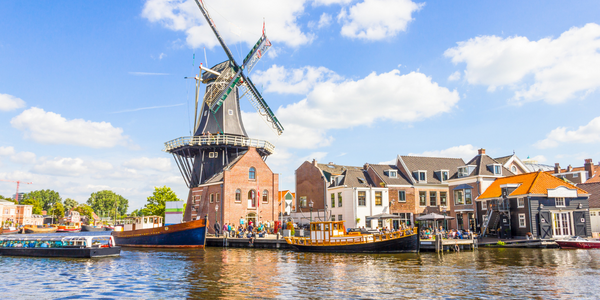Download PDF
Oporto Water Utility Develops Technology Platform for Integrated Management of Urban Water Cycle
Technology Category
- Analytics & Modeling - Data Mining
- Sensors - Utility Meters
Applicable Industries
- Cities & Municipalities
- Mining
Applicable Functions
- Maintenance
- Quality Assurance
Use Cases
- Intelligent Urban Water Supply Management
- Water Utility Management
Services
- System Integration
- Testing & Certification
The Challenge
Águas do Porto (AdP), the water utility responsible for the integrated management of the entire urban water cycle of the city of Oporto, Portugal, faced challenges due to the density and complexity of the hydraulic infrastructure and water resources. The need for integrated management of the urban water cycle was paramount, but integrating the vast number of existing systems throughout the company was a significant challenge. The data gathered simultaneously from a wide range of systems and sources, spread over dozens of individual software systems, needed to be integrated into a single platform. The main challenge in the implementation of the system was the city water cycle scale, which required detailed resolution for many models and domains, including meteorology, water supply, sewer, and storm drainage. The city water scale also required the ability to consume large amounts of data from real-time sensors and consumers’ telemetry and billing.
About The Customer
Águas do Porto (AdP) is responsible for the sustainable and integrated management of the entire urban water cycle of the city of Oporto, Portugal, including water supply, wastewater drainage and treatment, stormwater drainage, surface waters, and coastal bathing water quality. AdP is one of the largest Portuguese companies in the sector with over 150,000 clients serving around 500,000 people. AdP delivers an average of 45,490 cubic meters of water to the population daily and collects approximately the same amount for treatment. The overarching goal of the Oporto water utility was to achieve the holistic management of the water cycle in a smart city context.
The Solution
To address these challenges, AdP developed the “Technology Platform for the Integrated Water Management of the Urban Water Cycle – H2Porto.” The goal of H2Porto was to promote a culture of innovation and Smart Water Management for the efficient usage of existing resources. H2Porto integrates territorial information via geographic information systems (GIS), video surveillance of infrastructures, numerical modeling, remote data acquisition, and public reporting. The implementation of H2Porto was acquired by AdP through an international public tender, won by the consortium of Aqualogus, Bentley Systems, and A20. Bentley was responsible for the implementation of the modeling and predictive capabilities of the project. Bentley software produced a digital twin model of the city’s water supply, wastewater, stormwater, and bathing water systems, to forecast flooding and water quality issues, thereby improving city response and resilience.
Operational Impact
Quantitative Benefit
Related Case Studies.

Case Study
Turning A Stadium Into A Smart Building
Honeywell created what it called the “intelligent system” for the National Stadium in Beijing, China, turning the venue for the opening and closing events at the 2008 Summer Olympics into a “smart building.” Designed by highly controversial artist Ai Weiwei, the “Bird’s Nest” remains one of the most impressive feats of stadium architecture in the world. The 250,000 square meter structure housed more than 100,000 athletes and spectators at a time. To accommodate such capacity, China turned to Honeywell’s EBI Integrated Building Management System to create an integrated “intelligent system” for improved building security, safety and energy efficiency.
.png)
Case Study
Smart Street Light Network (Copenhagen)
Key stakeholders are taking a comprehensive approach to rethinking smart city innovation. City leaders have collaborated through partnerships involving government, research institutions and solution providers. The Copenhagen Solutions Lab is one of the leading organizations at the forefront of this movement. By bringing together manufacturers with municipal buyers, the Copenhagen Solutions Lab has catalyzed the development and deployment of next-generation smart city innovations. Copenhagen is leveraging this unique approach to accelerate the implementation of smart city solutions. One of the primary focus areas is LED street lighting.

Case Study
Buoy Status Monitoring with LoRa
The Netherlands are well-known for their inland waterways, canals, sluices and of course port activities. The Dutch Ministry of Infrastructure indicates that there are thousands of buoys and fixed items in and near water environments that would profit from IoT monitoring. One of the problems with buoys for example, is that they get hit by ships and the anchor cable breaks. Without connectivity, it takes quite some time to find out that something has happened with that buoy. Not to mention the costs of renting a boat to go to the buoy to fix it. Another important issue, is that there is no real-time monitoring of the buoys at this moment. Only by physically visiting the object on the water, one gains insight in its status.

Case Study
China Mobile Smart Parking
Smart Parking, powered by NB-IoT technology, is making it easier for drivers to find free parking spots. Cities can better manage their parking assets and maximize the revenue available to them as a result. Drivers searching for parking create congestion and pollution by circling and hunting for available parking. Smart Parking services are able to significantly ease these problems by guiding a driver directly to a parking space.

Case Study
Barcelona Case Study
Barcelona’s heavy traffic and its associated high levels of pollution were the primary factors that motivated some companies and universities to work on strategies for improving traffic in the city centre. Bitcarrier is one of the technologies involved in the In4Mo Project, whose main objective is to develop the applications that form the core of smart mobility, one of the fundamental pillars of the smart city concept.






